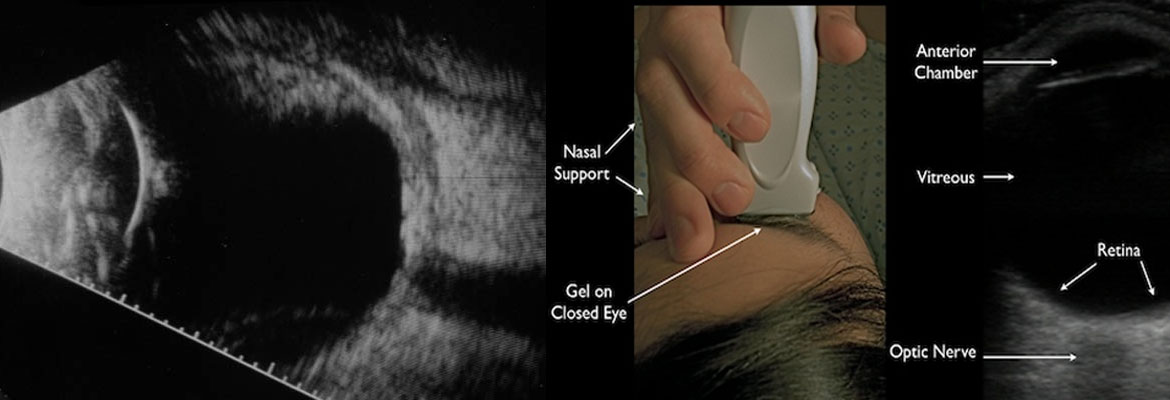An eye and orbit ultrasound uses high-frequency sound waves to measure and produce detailed images of your eye and eye orbit. The orbit is the socket in your skull that holds your eye. This test provides a much more detailed view of the inside of your eye than is possible during a routine eye exam.
Ushakaal Building, Nr Dhantoli Police Station
Dhantoli, Nagpur - 440012
10:30 AM - 9:00 PM
Monday to Saturday
Ocular Imaging (Eye ultrasound or B-scan)

What Is an Eye and Orbit Ultrasound?
Risks of Eye and Orbit Ultrasound
This is a quick and painless procedure with no serious side effects or risks.
Advantages of Eye ultrasound
- Absolutely safe, painless & quick.
- Reliable.
- No complications.
- It helps your doctor see the space behind the eye. Cataracts and other conditions make it difficult to see the back of the eye using standard ophthalmological equipments, in such cases eye ultrasound / B-scan helps in the diagnosis.
- No ionizing radiation.
- No need to put drops into eyes for dilating pupils (so no blurring after test).
Why Do I Need an Eye and Orbit Ultrasound?
- Decreased vision/loss of vision
- Suspected foreign body
- Ocular pain
- Eye trauma
- Screening eye complications in patients with diabetes
This procedure is helpful in identifying issues with the eyes and diagnosing eye diseases. For example, some issues the test can help identify include:
- Tumors or neoplasms involving the eye
- Foreign substances
- Detachment of the retina
- Eye complications in patients with diabetes
An eye and orbit ultrasound can also be used to help diagnose or monitor:
- Glaucoma (a progressive disease that can lead to vision loss)
- Cataracts (cloudy areas in the lens)
- Lens implants (plastic lenses implanted in the eye after the natural lens has been removed, usually due to cataracts)
Your doctor can also use this procedure to measure the thickness and extent of a cancerous tumor and determine treatment options.
